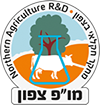Objectives, Targets and Modes of Action
The objective: to develop and guide the region's agriculture in economically-viable directions, while advancing sustainable agriculture, increasing the value and improving the quality of agricultural produce and exploiting the relative advantages of the region.
In order to fulfill this objective, Northern R&D defined a number of central targets. These targets are updated according to developments in the agricultural environment.
Professional work directions – Northern R&D 2015-2020
1. Profitable agriculture – constant improvement in the level of output and quality of the crops that lead the regional economy, improving the efficiency of use of inputs. There are detailed quantitative targets in the different research areas according to the type of crop.
2. Diverse agriculture – diversifying the branches of agriculture relevant to the region’s farmers – assessing crops suited to the local climate, particularly those with potential for export and/or for adapting new and unique varieties to seasonal and market niches. This includes adaptation to sub-regions and the ‘diversity’ of the population.
3. “Smart” agriculture – developing products with added value – functional food (products with hidden benefits), health-promoting nutrition, linking to industry – cooperative regional activity – recruiting man power for conducting tasks, identifying and linking to industry.
4. Precision agriculture – providing inputs according to the requirements of the individual unit, remote-sensing, controlling use of inputs – water, fertilizer, pesticides etc. – developing tools and capabilities .
5. Agriculture and environment – reducing use of pesticides – strengthening implementation processes. The target: by 2020 70% of agricultural areas will use environmentally-friendly management.
• Treatment of agricultural refuse – animals and plants, damages and secondary uses.
• Fertilizers in agriculture – precise dosage.
Targets for 2015-2016
Professional targets:
1. Developing and guiding the region's agriculture in economically-viable directions, increasing the value and improving the quality of agricultural produce while exploiting relative advantages.
2. Promoting new and innovative ideas in regional agriculture – advancing new ideas in the fields of plants and animals including professional and marketing assessment, connecting agriculture to industry, establishing model plots in these fields and providing growers with close professional guidance.
3. Model plots for plant crops in different areas to strengthen assimilation of knowledge.
4. Strengthening animal production.
5. Developing operations in precision agriculture.
6. Connecting between different activities such as post-harvest treatment of produce as an integral part of Northern R&D activity.
7. Agriculture and environment
Northern R&D Activity
The main areas in which the Northern R&D is active are:
• Growing the entire range of orchards: deciduous, subtropical, wine grapes and citrus
• Developing ornamental crops – cut flowers and potted plants
• Growing edible mushrooms, unique mushrooms under different conditions
• Beef cattle on pasture in open landscapes
• Growing orchards and field crops using environmentally-friendly management, treating plant damage with minimal use of pesticides
• Developing technologies to save and increase efficiency of use of agricultural inputs
• Implementing and assimilating new agricultural technologies
• Dealing with the agricultural value chain – including storage and post-harvest treatment of produce
• Carrying out projects for advancing high-quality agriculture
Fields of activity towards 2020:
• Profitable agriculture – constant improvement of the level and quality of outputs. Increasing efficiency of use of agricultural inputs.
• Diverse agriculture – diversifying branches of agriculture relevant to the region’s farmers, adapting to sub-regions and the ‘diversity’ of the population.
• “Smart” agriculture – developing products with added value – functional food (products with hidden benefits).
• Precision agriculture – remote sensing. Controlling use of inputs – water, fertilizers, pesticides etc. Providing inputs according to the needs of the individual unit.
• Agriculture and environment
• Reducing pesticide use
• Exploiting agricultural refuse from plants and animals
• Assessing damages from secondary uses
• Fertilizers in agriculture – effects of their use
Activity budget
The main sources are: support from KKL-JNF and governmental ministries, the Fund of the Chief Scientist of the Ministry of Agriculture, agriculture production councils (farmer participation), Israeli and international research funds.
Northen R&D develops partnerships with industry and with producers of agricultural inputs in Israel and around the world.
